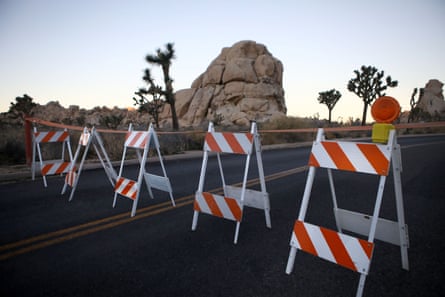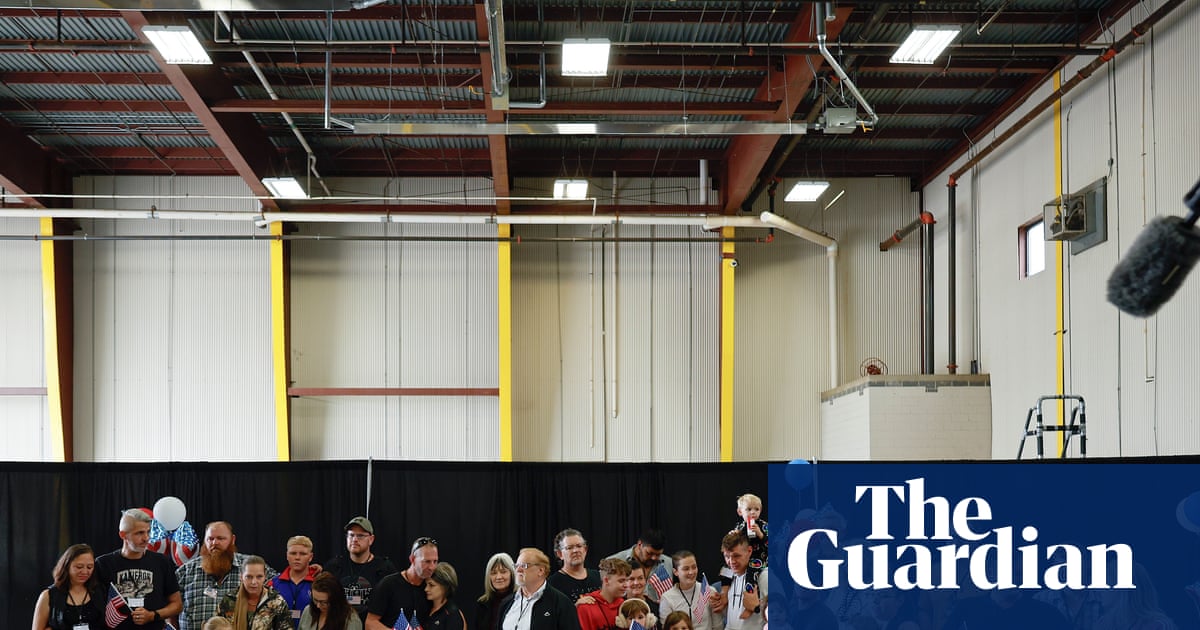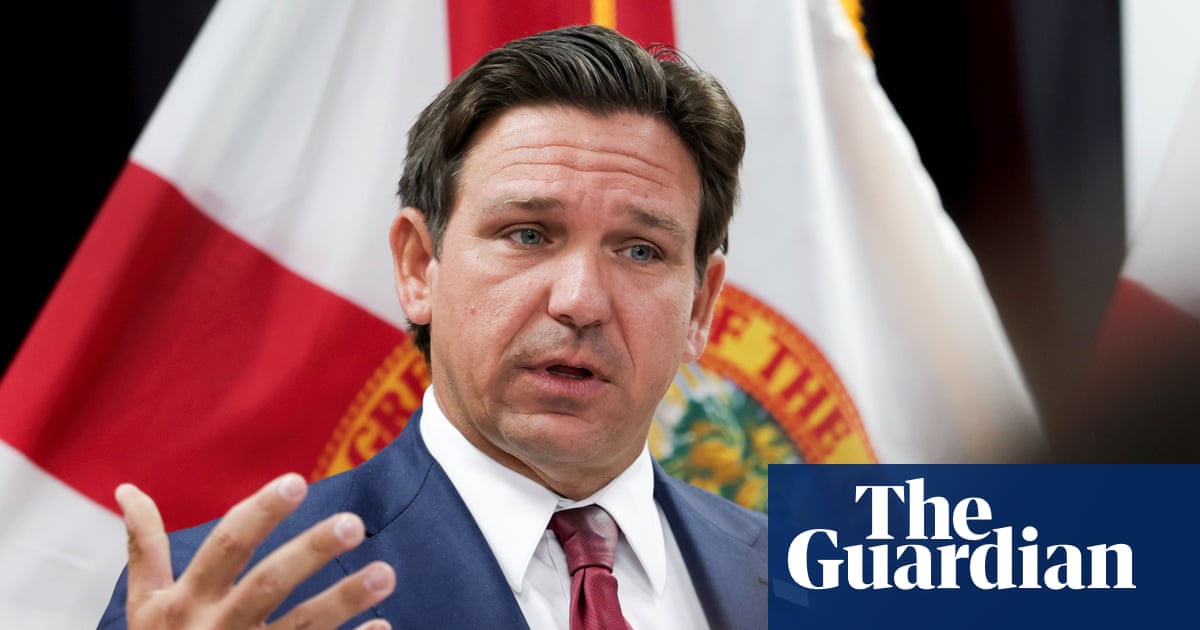With the potential for another contentious US government shutdown looming large this week, national park leaders and advocates are growing concerned that the Trump administration could again push for leaving America’s parks open when they are unstaffed.
“National parks don’t run themselves. It is hard-working National Park Service employees that keep them safe, clean and accessible,” 40 former superintendents said in a letter issued to Doug Burgum, the interior secretary, this week, urging him to close the parks if a shutdown occurs. “If sufficient staff aren’t there, visitors shouldn’t be either.”
Irreversible damage was done at popular parks, including Joshua Tree in California, following a month-long shutdown in Trump’s first term, when his administration demanded parks be kept open while funding was paused and workers were furloughed.
Without supervision, visitors left behind trails of destruction. Prehistoric petroglyphs were vandalized at Big Bend national park. Joshua trees, some more than a century old, were chopped down at Joshua Tree national park, as trash and toilets overflowed. Tire tracks crushed sensitive plants and desert habitats from illegal off-roading vehicles in Death Valley. There were widespread reports of wildlife poaching, search-and-rescue crews were quickly overwhelmed with calls, and visitor centers were broken into.
There were 26 pages of listed damages, according to Kristen Brengel, senior vice-president of government affairs for the National Parks Conservation Association, who added that those effects happened in late December and January – a season when many parks are typically quieter.
The autumn months, and October especially, still draw millions of visitors even as the peak of summer visitation begins to slow. In 2024, there were more than 28.4 million recreational visits in October alone, according to data from the NPS.
Park staff also play an important role in mitigating wildfires, ensuring that campfires are properly managed and extinguished, and initiating a response when ignitions do occur. Autumn is a time of high fire risk in the American west, when strong winds can quickly fan flames, and park advocates are warning that leaving parks open with only a skeleton crew could prove catastrophic – and exceedingly dangerous.
“There’s a lot of reason to be concerned – it would be really problematic if they allowed parks to stay open with almost no staff,” Brengel said. “I worry about the visitors who might go in.”
The National Park Service relies on contingency plans to guide their actions in the event of a shutdown. Park leaders are still awaiting approvals from the Trump administration of an updated plan, and the Department of the Interior declined to comment or provide details on what’s included in that plan.
But its last directive, issued November 2023 under the Biden administration, instructed that “gates will be locked, visitor centers will be closed, and thousands of park rangers will be furloughed”. Officials at the time claimed lessons had been learned from the damaging decisions that left parks vulnerable to destruction during Trump’s 2018-19 shutdown.
With just days left before funding could stop, it’s unclear whether Trump will call for those updates to be reversed. An order from Burgum issued in April forced parks to stay open even when resources were severely thin, serving as an early indication that the administration may once again push for public access, despite the risks.

The prospect of a shutdown comes on the heels of an already challenging summer as the National Parks Service weathered deep budget cuts from the Trump administration. With staffing slashed by almost a quarter across the board, 90 national parks have been operating under considerable strain, according to the superintendents’ letter.
Visitors centers have closed, without adequate staffing and funding, as rangers and crews struggle to respond to emergencies, maintain facilities, and ensure conservation can coexist with recreation.
“The parks look understaffed even on a regular day without a shutdown,” Brengel said, adding that they’ve been operating with bare-bones budgets.
There are concerns that more cuts could be coming, especially as a shutdown unfolds.
The office of management and budget (OMB), headed by Project 2025 architect Russ Vought, has also indicated it will exploit the shutdown to further slash federal staffing, instructing agencies in a memorandum to “use this opportunity to consider reduction in force (RIF) notices for all employees in programs, projects, or activities”.
“We just don’t know what this administration is going to do right now,” Brengel said. “The laws don’t seem to stop them from doing harmful things to parks.”
While there are strong concerns about the problems caused by keeping parks open, shutdowns pack a hefty financial punch, and closing down also comes with steep consequences.
Long-term projects and research could also be affected, along with routine maintenance of trails and infrastructure, and the parks would take a considerable financial hit from lost revenues that come from visitation.
Park closures during a 2013 shutdown that spanned just over two-weeks led to an estimated $500m in lost visitor spending, with significant damage done in the gateway communities tucked near popular recreation areas that depend on tourism.
Roughly a million visitors a day would be turned away, according to the NPCA, resulting in up to $77m lost daily in gateway communities. Park staff, including many who are already financially stretched thin, face days without pay.
Lawmakers have until Wednesday to agree on a spending plan, though Trump and Republicans in Congress signaled they would do little to stop the impending shutdown.
“Americans across the country and across the political spectrum cherish our national parks and public lands,” the superintendents wrote. “They conserve our most special sites so that everyone can hike, swim, hunt, fish, learn, and seek solace in nature. With their future already under threat, now is not the time to use the parks and public lands as pawns in political games.”

 German (DE)
German (DE)  English (US)
English (US)  Spanish (ES)
Spanish (ES)  French (FR)
French (FR)  Hindi (IN)
Hindi (IN)  Italian (IT)
Italian (IT)  Russian (RU)
Russian (RU)  4 weeks ago
4 weeks ago
























Comments